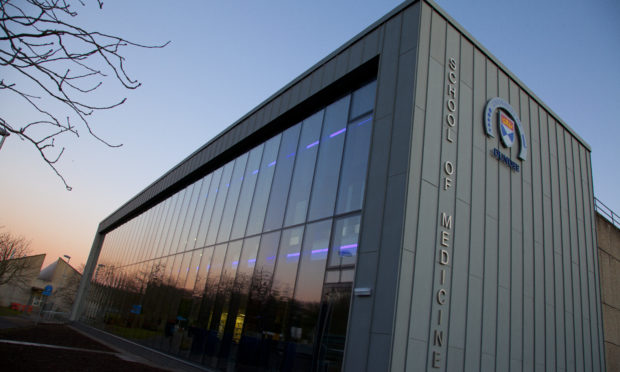The “two-metre rule” to keep a safe distance when socialising may be based on a misunderstanding of studies into infection risk, a Tayside expert has said.
Dr Mike Lonergan, senior statistician and epidemiologist at Dundee University’s School of Medicine, believes research showing the benefits of keeping a two -metre distance, the advice since the beginning of lockdown, is flawed.
Dr Lonergan has examined the studies of 25 countries around the world and found eliminating direct physical contact is the best way to reduce infection and anything more “adds little”.
He begins his paper, available at Research Gate by saying “Even one metre seems generous” and adds public health advice may be better focused on highlighting the risk of cross-contamination through sharing hard surfaces.
“This re-analysis suggests there may be some benefit in remaining one metre away from infected individuals but that is likely to be small.
“It is much harder to find any support for advantages from greater separation distances here.
“If simply not touching infected individuals is likely to reduce infection risk by more than half, and longer separation distances add little to this, then there may be little benefit from long-range social distancing.
“These results could be taken as suggesting that the bulk of infection takes place through the direct transfer of material, rather than by an aerial route.
“If that is so, then, provided we refrain from coughing or spitting on each other, public health policy might be better concentrating more on limiting the touching of surfaces than on keeping people apart.”
The World Health Organisation (WHO) commissioned analysis of 25 papers from around the world examining the effects of separation distance on infection risk.
Although the WHO had previously recommended that people stay at least one metre away from each other, the researchers found that extending this distance significantly reduced the chances of infection.
Dr Lonergan, who previously estimated lockdown could save around one million lives in the UK alone, re-examined the studies and believes these datasets were limited and contradict the researchers’ conclusion.
The original studies compared risk ratios are relative to those of touching and Dr Lonergan believes the researchers should not have calculated them in the way they have as many individuals in the closer groups had physical contact with an infected individual.
He added: “The most important way to prevent the spread of this coronavirus is to avoid touching an infected person, but questions about the safety of various distances between individuals remain.
“Our conclusion is that avoiding contact is very important and that a one metre distance might be slightly better than just avoiding contact but the difference is unlikely to be much.
“These data give no indication that two metres is better than one metre or just avoiding contact.”
The research has not yet been submitted for a formal peer review but Dr Lonergan wanted to make it available, given the importance of the social distancing debate.










